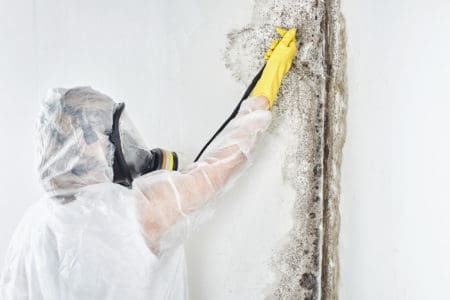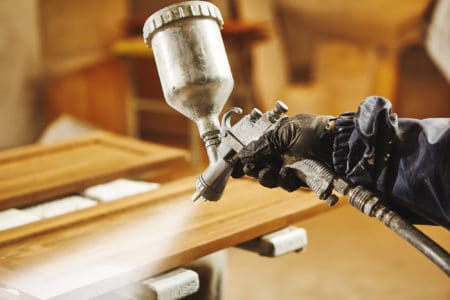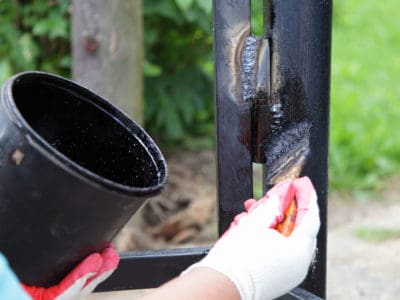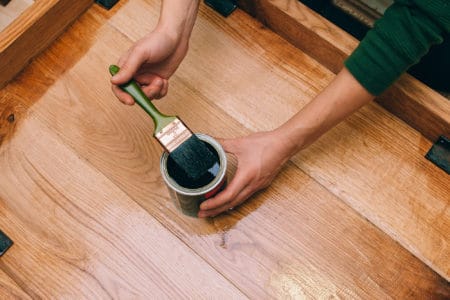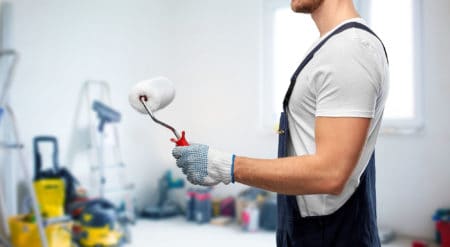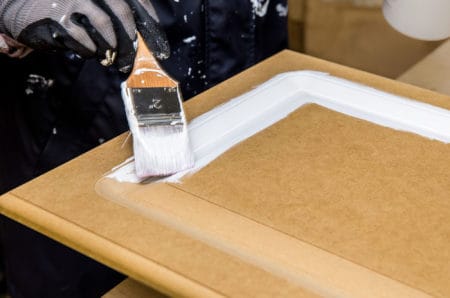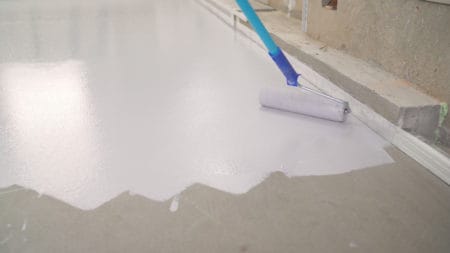No one wants mold, so finding ways to stop it from growing is crucial. Mold carries harmful spores that can irritate your lungs, so using a mold-killing primer is a lifesaver. Mold-resistant paint doesn’t actually kill mold; it just prevents it from growing.
We give you the lowdown on mildew-resistant paint and run through the best brands out there.
Key Takeaways
- Mold-resistant primer prevents future mold growth but doesn’t kill existing mold.
- Top brands for mold-resistant primer include Zinsser, KILZ, INSL-X, and Rust-Oleum.
- Use mold-resistant paint, such as KILZ Masonry and Brick Paint or Zinsser Perma-White, after applying primer.
- To prevent future mold growth, improve ventilation, keep surfaces dry, and use mold-resistant products.
What Causes Mold Growth?
Mold likes damp air. It thrives in sheltered and humid places, which is why it grows in kitchens and bathrooms. Wherever water is present, mold is never far behind.
And once it takes hold, it can be challenging to remove. A leaking roof, a dripping pipe, damp walls, and cooking steam can contribute to mold growth.
Is Mold Harmful?
Repeated and continuous exposure to mold can cause respiratory problems and aggravate breathing disorders like asthma. If you cough a lot, sneeze frequently, and get sinus infections, it could signify black mold.
Other symptoms include a runny nose, a sore throat, and difficulty breathing.
Does Mold-Killing Primer Really Work?
Mold-killing primer does work to prevent future mold growth, but it does not “kill” fungal growth. A mold inhibitor seals the walls or ceiling to stop fungus from taking hold. You still need to remove the mildew using other means before applying a primer.
Best Mold-Resistant Primer
Finding the right product can be a minefield when looking for a mold-resistant primer. One sure-fire way of knowing the best brands is to look at online reviews. Here’s our take on the best names to look out for.
Zinsser
Zinsser is one of the most trusted brands in the primer market. This Bullseye 1.2.3 Primer is a general-purpose paint suitable for all surfaces. They also produce an extensive range designed for more nuanced uses.
KILZ
Kilz is another giant of the primer world. Like Zinsser, they produce an extensive range of products that inhibit mold growth. This stain blocker for kitchens and bathrooms is extremely popular.
Other products include exterior, interior, restoration, and odor-killing primers, designed to stop mold growth on concrete.
INSL-X
INSL-X may lack the pedigree of KILZ or Zinsser, but the company makes a quality range of primers. This INSL-X Multisurface Primer covers most surfaces with powerful adhesion and stain-blocking qualities.
Rust-Oleum
Rust-Oleum is one of the country’s best-known paint brands, but they also make superior primer. This Stops Rust Primer is aimed at rusty materials, but it still seals against mold and mildew.
Best Mold-Resistant Paint
Once you’ve treated the mold and coated it in primer, you will need the best-quality paint money can buy. Which brands stand out in a crowded lineup? Let’s take a look.
KILZ
KILZ Masonry and Brick Paint is extremely popular for concrete and exterior walls. It is a self-priming paint, so you can apply it without laying down primer first. This saves you time and money because you only need to buy the paint rather than the primer.
Zinsser
There’s that famous name again! Not only do they make great primers, but they also dominate the interior and exterior paint market. This Perma-White range is ideal for most surfaces and is an acrylic-based paint.
How to Kill Mold With Paint
So, the time has come to banish that unsightly black mold and freshen up the paint. Before you start, you will need some supplies and materials.
What You’ll Need
- Face mask.
- Rubber gloves.
- Vinegar solution.
- Mold-resistant primer.
- Stick.
- Sandpaper.
- Mold-resistant paint.
- Brush or roller.
- Paint tray.
- Dry cloth.
1. Don Safety Gear
You cannot put a price on your safety. Mold spores can damage your lungs and aggravate breathing conditions like asthma. Pop on your face mask and rubber gloves.
2. Apply the Vinegar Solution
Vinegar is a mild acid, and it kills mold. Mix up one part of vinegar to one part of water. Spray it liberally over the affected area and wait for 20 minutes while the cleaning agent gets to work.
After the allotted time, wipe the mold away with a dry cloth. Keep rubbing until all the mold has gone. This also helps to dry the wall. Place the dirty rag outside and keep it away from pets.
3. Apply the Primer
Once the surface is bone dry, open the primer can and give it a good stir with a stick. Pour the primer into a paint tray and use the brush or roller to coat the treated area. Wait for the recommended drying time before sanding the surface with fine-grade sandpaper.
Apply a second coat of primer and wait the recommended time while it dries.
Top Tip
To save having to wash out the paint tray, line it with aluminum foil so that you can remove and dispose of it when you are done.
4. Apply the Paint
Pour the mold-blocking paint into the paint tray. Using either a roller or brush, apply it to the primed area. Paint on two coats, allowing the required time for the paint to dry between each layer.
How to Prevent Future Mold Growth
Curing mold growth is one thing, but knowing how to stop it from growing in the first place is better. Once you have treated and painted the affected area, mold could still grow back if you fail to keep on top of things.
Prevention is crucial for porous surfaces, sealing against moisture damage.
Ventilation
Mold grows in damp air, so improving ventilation is crucial if you want it to stay away. Open the windows or install a ceiling or vent fan. These all help generate air movement, which dries the atmosphere.
Keep Things Dry
Damp rooms like kitchens and bathrooms are perfect breeding grounds for mold. Wipe down the walls, shower enclosures, and other surfaces with a dry towel. One simple act can prevent mold growth, but remember to remove the wet towel when you are done.
Apply a Cleaning Agent
When you’ve finished your shower or bath, apply a coating of vinegar and water via a spray bottle. It is 100 percent natural, and the mild acid kills mold spores.
Take Note
Once applied, wait 20 minutes before wiping the solution off the wall. If you leave it, it could encourage mold to grow back.
Equip Your Home With Mold-Resistant Products
Using mold-resistant drywall can prevent spores from growing. It differs from sheetrock with Gypsum sandwiched between sheets of paper. With mold-resistant drywall, there is no paper.
This type of drywall is ideal for rooms with high moisture levels like bathrooms, kitchens, and laundry rooms.
Buy a Dehumidifier
Dehumidifiers are excellent tools for removing humidity. These ingenious machines can be set to trigger when the humidity levels rise, and they are typically portable. This Airplus model collects 30 pints of water and is ideal for bathrooms and basements.
The recommended humidity level inside your home is between 40 and 60 percent. Too high, and mold grows; too low, and it can irritate your skin, eyes, and throat.
Direct Water Away from Your Home
If rainwater flows towards your home, it rests against your basement walls and soaks in. Once your basement walls become damp, mold spores spread through the air and take hold.
Simple exterior groundworks can redirect the flow of water, preventing water pooling.
Fix Leaky Gutters
Leaky gutters are a prime source of mold growth inside your home. Water damage can be deadly for wood fascias and sidings, with water getting behind and soaking through the wall.
Fixing blocked gutters is simple enough. The problem usually starts when the wind deposits leaves and other debris. The mold then grows in the damp spots.
This restricts the water flow and the gutter leaks.
Other Methods of Killing Mold
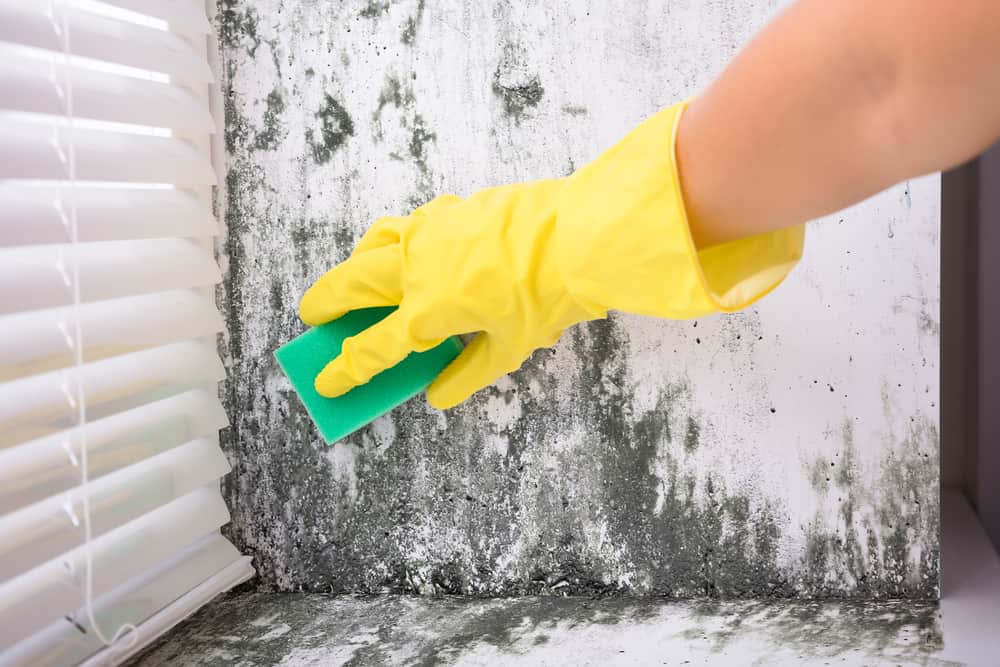
What alternative methods exist to help you kill mold? Maybe you don’t want to use harsh chemicals because of pets and children? Luckily, there are natural ways to kill mold.
Baking Soda
Baking soda is 100 percent natural and very good at killing mold. Mix it with water or water and vinegar and apply it to the mold. Scrub with a brush until the spores vanish, and dry the affected area with a cloth.
Hydrogen Peroxide
Hydrogen Peroxide is another natural remedy. Mix it with water and spray it on the mold. You will need a spray bottle and three percent hydrogen peroxide.
Leave it for 10 minutes and wipe the mold away. Combine hydrogen peroxide with distilled vinegar for an even more potent mix.
Take Care
Never mix hydrogen peroxide with bleach. It will react chemically, making it highly volatile.
Grapefruit Seed Extract
Mix two cups of water with 20 drops of grapefruit seed extract into a spray bottle. Apply it to the affected area and leave it to sit for 20 minutes. Finally, grab a clean cloth and wipe the mold away.
This NutriBiotic Extract is affordable and comes highly recommended on Amazon.
Tea Tree Oil Spray
Mix two cups of water with two teaspoons of tea tree oil into a spray bottle. Shake the bottle, so the solution mixes well. Spray it onto your mold and leave it to do its work.
When the mold disappears, wipe the surface clean with a cloth.
Tea tree oil is also effective at removing mold from leather. However, don’t leave the solution to sit, or it will damage the material. Spray, and then wipe it off immediately.
Word Of Caution
Concentrated tea tree oil could be dangerous for dogs and cats. It brings them out in hives and causes breathing difficulties.
FAQs
Get Bold With Mold
No one wants mold; it stains, looks unsightly and causes health issues. Once you have fungal growth, it can be a challenge to eradicate. Mold-resistant paints and primers are your first line of defense in the fight against fungal growth.
Protect your surfaces and your family’s health and use mold-killing primers and paints.
